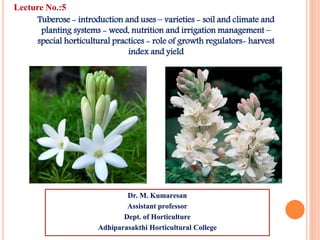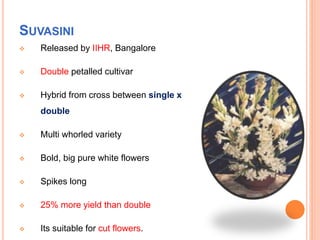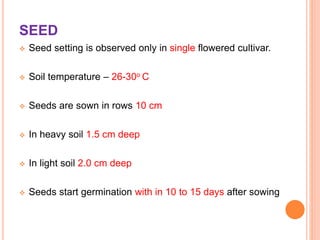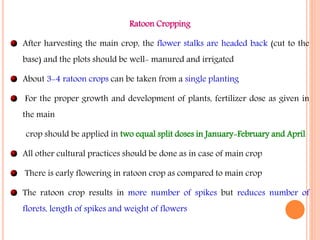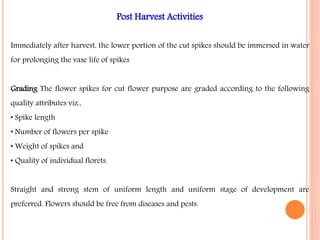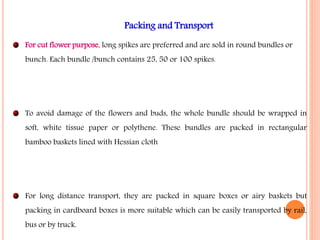The document provides a comprehensive overview of tuberose (Polianthes tuberosa), detailing its botanical characteristics, various cultivars, optimal soil and climate conditions for cultivation, and specific agricultural practices including planting, irrigation, and pest management. It discusses the importance of tuberose in the cut flower and loose flower trade, along with methods for propagation, harvesting, and post-harvest handling to maximize yield and quality. Additionally, it includes pest and disease management strategies to ensure healthy growth and productivity.
